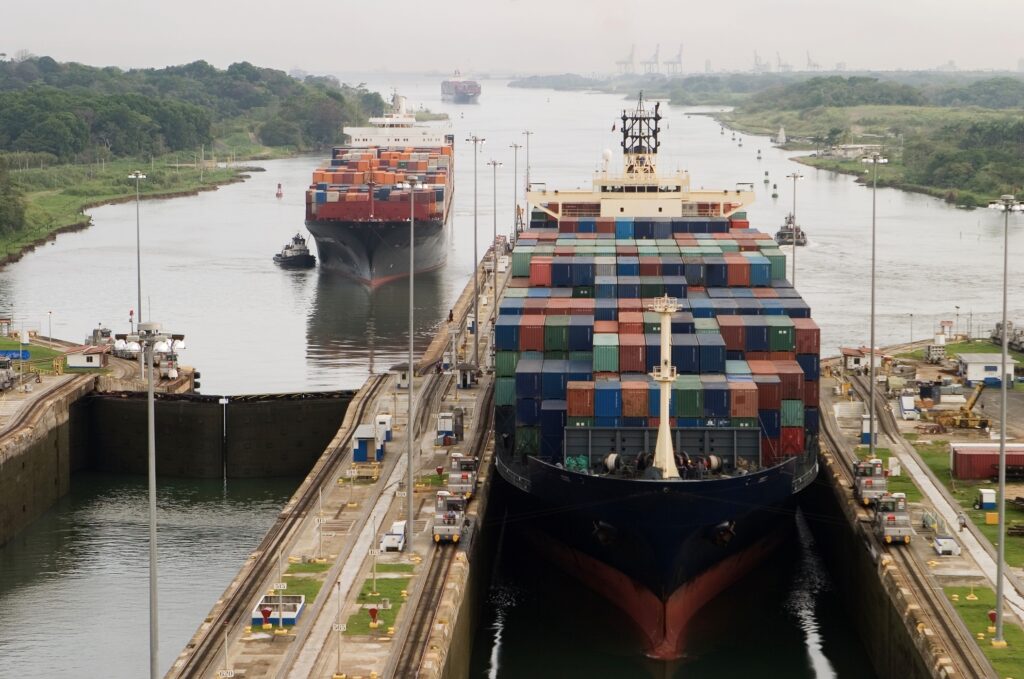By Victoria Holmes, Braumiller Law Group
China has significantly expanded its economic and geopolitical footprint in Latin America, particularly through the acquisition and development of critical infrastructure such as ports, airfields, and railways. This strategic move has raised questions about the long-term implications for regional sovereignty, global trade routes, and the future of the Panama Canal, a linchpin of international maritime commerce.
China’s Infrastructure Investments in Latin America
China’s interest in Latin America is part of its broader Belt and Road Initiative (BRI), a global infrastructure development strategy aimed at enhancing trade connectivity and securing supply chains. In Latin America, Chinese state-owned enterprises and private companies have invested billions of dollars in ports, logistics hubs, and transportation networks.
China has acquired or invested in ports across the region, including in Brazil, Peru, Chile, and Argentina. For example, Chancay port, dubbed the “Shanghai of Peru” by the Chinese ambassador to Peru, is the largest deepwater port on the western coast of South America. The shipping company COSCO, a state-owned Chinese company and the second-largest operator of container ports in the world, owns a 60% majority stake in the port, a key hub for pacific trade. Similarly, Chinese companies have invested in Brazil’s Port of São Luís and Chile’s Port of San Antonio. Panama is also rich in minerals, and the port is an example of China’s strategy to control access to these minerals as part of their economic growth.
Airfields and Railways: Beyond ports, China has financed and constructed railways and airfields to improve regional connectivity. The Bioceanic Railway Corridor, linking Brazil’s Atlantic coast to Peru’s Pacific coast, is one such project that could reshape trade flows in South America. Although, there are doubts that this project will ever actually be completed.
Energy and Telecommunications: China has also invested heavily in energy infrastructure, including hydroelectric dams and solar farms, as well as telecommunications networks, further solidifying its presence in the region. Half of São Paulo’s hydropower generation capacity and over 300 power plants are owned by Chinese companies. In Chile, the State Grid Corporation of China owns more than half of the country’s regulated energy distribution. Also, about 90% of wind and solar technologies are produced by Chinese companies.
Strategic Implications for the Panama Canal
The Panama Canal, a critical artery for global maritime trade, handles approximately 6% of the world’s shipping traffic. Its strategic importance cannot be overstated, as it provides a shortcut between the Atlantic and Pacific Oceans, saving ships thousands of miles and weeks of travel time. However, China’s growing infrastructure investments in Latin America could pose challenges to the canal’s dominance.
Alternative Trade Routes: China’s development of ports on both the Atlantic and Pacific coasts of South America could create alternative trade routes that bypass the Panama Canal. For example, the Chancay Port in Peru, once fully operational, could serve as a transshipment hub for goods moving between Asia and South America, reducing reliance on the canal.
Geopolitical Leverage: China’s control over key infrastructure in Latin America could give it significant geopolitical leverage. In the event of a global conflict or trade dispute, China could potentially use its influence over these assets to disrupt shipping routes or exert pressure on other nations.
Broader Implications for Latin America
While China’s investments bring much-needed infrastructure development and economic opportunities to Latin America, they also come with risks. Critics argue that these projects often come with strings attached, such as high-interest loans or requirements to use Chinese contractors, which can lead to debt dependency. Additionally, the environmental and social impacts of large-scale infrastructure projects have sparked protests and concerns in some countries.
For the United States, China’s growing presence in its traditional sphere of influence is a cause for concern. The U.S. has historically viewed Latin America as its backyard, and China’s encroachment could shift the balance of power in the region. This has promptedcalls for the U.S. to increase its own engagement and investment in Latin America to counter China’s influence. During his confirmation hearings before senate, Secretary of State pick Marco Rubio said, “A foreign power today possesses, through their companies, which we know are not independent, the ability to turn the canal into a choke point in a moment of conflict.”
The Future of the Panama Canal
The Panama Canal remains a vital asset for global trade, but its future will depend on how it adapts to changing dynamics. China’s infrastructure investments in Latin America represent a strategic effort to secure its position as a global economic power. While these investments offer economic benefits to the region, they also pose challenges to established trade routes and geopolitical dynamics. For the Panama Canal, the rise of China’s influence and increased competition underscores the need for continued adaptation and investment. As Latin America becomes a battleground for influence between major powers, the region’s nations must carefully navigate their relationships to ensure sustainable development and sovereignty.

